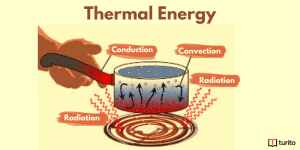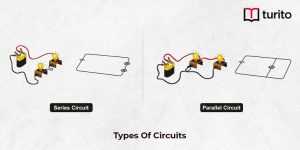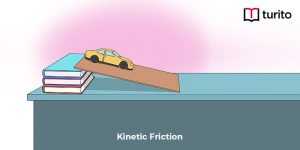You all must have seen a watermelon, a raisin pudding and a plum pudding in your daily lives. One of the early models of atoms, called the Thomson atomic model, has been compared to these food items in terms of appearance. This article is aimed at discussing this Thomson atomic model in detail.
History
Before the subatomic particles were discovered, Dalton’s atomic theory was given by John Dalton. In this theory, he described atoms as indivisible particles, which means that they cannot be broken down into further smaller particles. Later, the postulates proposed in the Dalton Atomic Theory were disapproved of because JJ Thomson discovered subatomic particles.
Because JJ Thomson discovered subatomic particles, the search for how these are arranged in an atom started. Of the many scientists who proposed models for atomic structure, J.J. Thomson was the first. In 1897, he discovered negatively charged particles through the cathode ray tube experiment. The name “electrons” was given to these particles.
According to J.J. Thomson, electrons are 2,000 times lighter than a proton. He also believed that an atom comprises a cloud of negatively charged particles in a sphere of positive charges. Rutherford and J.J. Thomson first demonstrated how air is ionised in X-rays.
Thomson’s Model of an Atom
Of the many scientific models of an atom, the Thomson atomic model is the one we can compare with a watermelon in appearance. This is because it suggests that the electrons are dispersed in a positively charged sphere in the atom just like black seeds are dispersed in the red edible part of a watermelon. This model was given in 1903 by J.J. Thomson after he discovered electrons. At that time, the nucleus of an atom had not been discovered. Therefore, he proposed a model based on the properties of atoms that were known at that time. Those were:
- Atoms carry a neutral charge. They are neither positively nor negatively charged as the two types of charges inside them balance each other.
- An atom is composed of negatively charged particles known as electrons.
Postulates of the Thomson Atomic Model
According to these postulates of the Thomson Atomic Model, an atom looks like a sphere of positive charge containing negatively charged particles called electrons. As the magnitude of the negatively charged particles and the positive amount is equal, they balance each other and, therefore, the atom is electrically neutral as a whole, carrying no charge.
The atomic model proposed by Thomson looks like a watermelon or a spherical plum pudding. This is because, in this model, the electrons look like raisins embedded in a sphere of positive charge, just like a plum pudding looks. It also looks like a watermelon as the red edible part of the fruit can be compared to the positively charged sphere, while the black seeds dispersed in the fruit resemble the electrons in the sphere.

Working on the Thomson’s Atomic Model
A series of experiments was conducted by J.J. Thomson to observe the nature of cathode rays. The aim was to conclude that cathode rays are negatively charged. The apparatus he designed was known as the Cathode Ray Tube. Nowadays, it is also called the ‘Electron Gun’.

Electrons travel from the cathode that lies on the left-hand side of the tube to the phosphorescent screen on the right-hand side via the anode. He observed that if the magnetic field is turned off, the electric field can deflect the beam. He also noticed that if we adjusted the strengths of the magnetic and electric fields, no deflection was seen in the cathode rays.
If the pressure is low (around 1 mm of mercury), the cathode rays look dark and slightly divergent near the cathode. The spread of this dark space occurs through the tube till it appears fuzzy. On reaching the glass or touching the phosphorescent screen, it looks glowy as the Cathode rays absorb energy.
He made measurements of the length of the apparatus, the deflection, and the strengths of the magnetic and electric fields for the calculation of charge to mass ratio. He observed that this ratio was not dependent on the metal and the gas inside the tube. This made him conclude that those negatively charged particles were atomic particles.
He noticed that when we apply a uniform magnetic field having a strength B in a direction perpendicular to that of the movement of charged particles, they get deflected in a circular path. We can obtain the radius R of this circular path by keeping the magnetic field ‘qvB’ equal to mass times the centripetal acceleration.
In subsequent experiments, Thomson altered the magnetic and electrical fields in a way that the cathode ray beam would not deflect; rather, it would be straight. By making the magnetic and electrical forces equal, he could find out the speed v.
Applications of the Plum Pudding Model
- The Cathode Ray experiment by J.J. Thomson made way for modern electronics and formed the base of the discovery of diodes and transistors. Researchers concluded from the experiments that cathode rays propagated in a straight line and aided them in studying the properties of waves.
- Cathode ray tubes are widely used in electronic devices nowadays.
- The experiments performed by J.J. Thomson led to revolutionising modern-day Quantum Physics.
Limitations of the Thomson atomic model
- His atomic model was unable to describe how a positive charge holds the negatively charged electrons in an atom, which prevented it from explaining the stability of an atom. As a result, this hypothesis was unable to account for the location of an atom’s nucleus.
- Thomson atomic model was unable to explain how thin metal foils scatter alpha particles.
- There is no experimental proof to the contrary.
Although Thomson’s model did not accurately represent the atomic structure, it served as the foundation for the creation of various atomic models. Find the pdf of the atomic structure here. Numerous technologies that have made a significant contribution to the advancement of humanity have been made possible by research into the atom and its structure.
Other Atomic Models
Rutherford’s Atomic Model
As the plum pudding model failed to explain certain aspects of the atomic structure, a British scientist named Ernest Rutherford experimented. Based on the observations he made in this experiment, he gave his atomic model.
According to him, most of the positive charge and atomic mass is stuffed into a small volume called the nucleus. He also proposed that the electrons surround the nucleus and orbit it in circular paths. As the nucleus was considered to be a densely concentrated mass of positive charge and electrons that revolve around it are negatively charged, they are held together by strong forces of attraction called electrostatic forces.
Bohr’s Atomic Model
Neil Bohr gave his atomic model in 1915 as a modification of Rutherford’s atomic model. As discussed above, Rutherford suggested that the atom contains a nucleus that is concentrated with a positive charge and is surrounded by negatively charged electrons revolving around it in circular paths called orbits.
Bohr called these orbits orbital shells and suggested that each orbit possesses a fixed amount of energy, whose different levels are represented by 1,2,3 etc., called quantum numbers. The numbering starts from the nucleus, with n=1 considered the lowest energy level. The subsequent orbital shells are designated as K, L, M…. so on with n=1,2,3….. so on. An electron is considered in the ground state when its energy level is the lowest.
In an atom, the electrons gain a certain amount of energy and travel to a higher level of energy from a lower energy level. If energy is lost, the electrons travel to a lower level of energy from a higher energy level.
Conclusion
Although JJ Thomson discovery of the atomic model is not valid nowadays and has limitations, it paved the way for many other atomic structure models that came to light later. It served as a foundation model giving way to substantial revolutionary inventions afterwards.
Frequently Asked Questions
1. Why was the Thomson discovery of the atomic model discarded?
A) Thomson atomic model could not explain the stability of an atom. Also, Thomson suggested that electrons are distributed in the atom in a way similar to how seeds are dispersed in a watermelon or raisins are dispersed in a pudding. It could not explain low electrons were held inside the positively charged sphere. Therefore, it was discarded.
2. Give the important characteristics of the Thomson discovery of the atomic model.
A) The Thomson discovery of the atomic model had the following characteristics:
- An atom is composed of a sphere of positive charge in which electrons are dispersed.
- The amount of positive and negative in an atom is equal, due to which it is electrically neutral.
3. Which fruit is Thomson atomic model compared to?
A) The atomic model given by Thomson is compared to a watermelon with the red edible part looking like a positively charged sphere, while the black seeds dispersed in it compared to the electrons inside the sphere.
4. What was not explained by Thomson atomic model?
A) Thomson atomic model did not explain the stability of an atom. It also did not mention anything about the protons and neutrons, neutrons, or the nucleus.

Relevant Articles
Understanding Thermal Energy: What It Is and How It Works
Thermal energy is essential to our daily lives, from warming …
Understanding Thermal Energy: What It Is and How It Works Read More »
Read More >>Avogadro’s Number: Meaning, Importance, and More
Introduction The concept of measuring the microscopic particles that make …
Avogadro’s Number: Meaning, Importance, and More Read More »
Read More >>Kinetic Friction – Definition, Laws, Types
Kinetic Friction Kinetic force is a force acting between two …
Kinetic Friction – Definition, Laws, Types Read More »
Read More >>




















Comments: